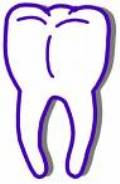
 |
 |
 |
 |
Toothache and Tooth Care Reviews
Dental Extractions
Dental Extractions
Dental extractions are among the easiest and best ways to get relief from a toothache. As the name implies, an extraction involves removing the tooth. If your pulp has died or the tooth has become severely infected, extraction may be your only route. Depending on the tooth, the dentist can do either a no problem extraction or a more complicated extraction.
Simple extractions
These types of extractions, the simple extractions, are the most common prominence the world of dentistry. During a simple extraction, the dentist will remove the tooth by loosening the gums around the socket. He cede grasp the tooth with forceps and move it from side to side until he can get true to break free from the socket and remove it.
The teeth are held to the bone by a thin piece of soft tissue. This soft tissue is known as the periodontal ligament. The dentist uses this tissue to withdraw the tooth. As you may know, the key to removing a tooth by pulling is to rock the tooth from side to side, which enlarges the socket in the bone and breaks the ligament that helps to hold the tooth in place.
Simple extractions, again known as pulling, donít proceeds long to complete. The dentist will numb you before he starts, so you wonít perceive anything. Depending on the tooth, pulling it will normally share just a few minutes after you have been numbed with local anesthesia. Once completed, the dentist bequeath place gauze in your mouth to refreshment on and you will be free to go.
Complex extractions
As we all know, not all teeth can be pulled. Sometimes, the tooth will be so decayed or broken off that the dentist will have nothing to grasp above the gum line. In cases such as this, the dentist will need to perform a more complicated extraction, which involves getting the tooth out below the gum line, as he wonít be able to use the standard method of pulling and rocking.
These types of extractions involve the dentist making an incision supremacy the gums around the tooth, and raising the flap he cut to expose the bone. Once he has exposed the bone, there may be enough of the tooth exposed for the dentist to grab and drain it using the pulling red tape. In most cases however, the tooth will be embedded in the bone, stuff that the dentist will sell for unable to pull the tooth out.
With teeth that are imbedded in the bone, the dentist will need to use a drill and chip away at the bone to get to the tooth. This is known as cutting the tooth out, and happens to be very common with impacted teeth or teeth that are severely decayed. Once the dentist has cut his way to the tooth and removed it, he will sew back the flap of skin that he cut to get to the tooth. The flap of skin and the socket will heal over time - providing you take care of it.
Dental extractions are very common, and happen on a daily basis for dentists. Oral surgeons are the best for extractions, being extractions are all they do. All types of extractions, even the most complex, will take lastingness to heal. As long as you take care of your extraction site, youíll avoid common pitfalls such as dry sockets and discrepant mishaps. Although they can be painful once the procedure is over - youíll eventually start to feel a lot better once you have had the tooth or teeth removed.
Share This With Your Friends |
Taking Care Of Sensitive Teeth
A Look At Gingivitis And Periodontal Disease
More Toothache and Tooth Care Articles
... cavities are among the worst, as the pain never seems to let up - no matter what you do. In the old days, teeth were extracted by pliers, as there were no dentists around. During these times, people would get drunk on alcohol and then the teeth would be extracted. There was no such thing as anaesthesia ...
... else you put in your mouth. If you don t get them fixed, they will get worse, possibly leading to your tooth breaking off at the gums. Pulp irritation is another cause of toothaches, as it occurs after dental treatment. No matter how well your filling or crown was done, the materials that were used to ...
Getting Over Your Fear Of The Dentist
... they can to establish a sense of confidence. Establishing trust is very important with the patient / dentist relationship. You ll be going to your dentist on a frequent basis, so you ll want to equate sure that you can trust him. When you go to your dentist for the first stint, you should let him know ...
... a vitality painful, once they are finished - there is literally no more pain. Most often, people will concentrate on the thought of getting the shot, which will only magnify the pain. Something that normally doesn t impaired, can get a lot worse simply by thinking in your mind that it will be difficult. ...

|
| Copyright © 2006-2012 Internet Marketing Tools, All Rights Reserved |